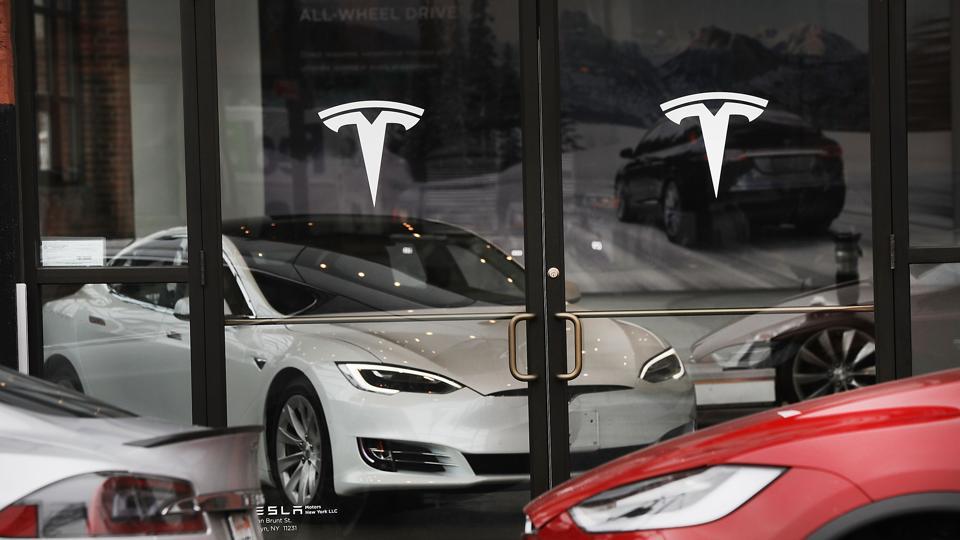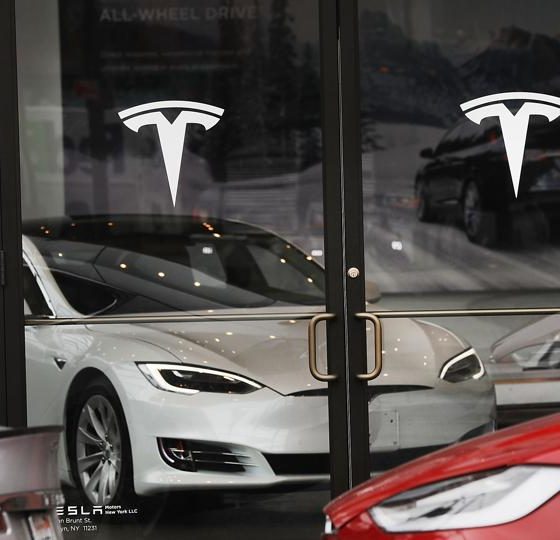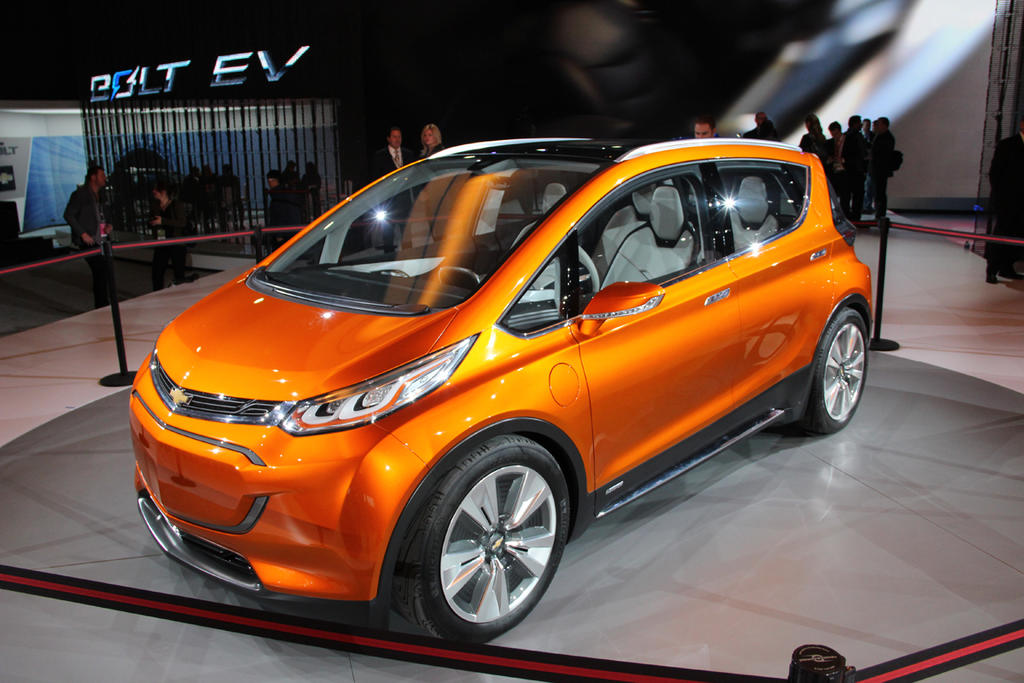

News
Tesla vs The Big Three – An uneven contest
Elon Musk has said many times that his ultimate goal is to increase the adoption of electric vehicles, a goal that’s advanced with every EV that rolls off a dealer’s lot, even if it’s not a Tesla. “The biggest impact that Tesla will have is not the cars that we make ourselves, but the fact that we show that you can make compelling electric cars that people want to buy,” he said in Revenge of the Electric Car.
When it comes to making compelling electric cars, the company has succeeded spectacularly. But when it comes to inspiring the industry leaders to sell their own EVs in substantial numbers, that isn’t happening. Spokesmen for the major automakers (especially when speaking to the EV media) say things like, “the future is electric,” and “we intend to stay at the forefront of technology,” but when it comes to action, the playbook is: sell just enough EVs to satisfy government regulators, while keeping the focus on profitable trucks and SUVs.
A recent article in CleanTechnica takes a look at the lineup of plug-in models offered by the Big Three (Ford, GM, and Fiat Chrysler). The current roster consists of 3 pure electric vehicles (EVs) and 5 plug-in hybrids (PHEVs). Of the 3 EVs, only one, the Chevy Bolt, is truly an attractive option. The Fiat 500e is a compliance car that’s only available in two states, and Fiat Chrysler CEO Sergio Marchionne has asked the public not to buy it. The Ford Focus EV was introduced in 2011, and not updated until 2015 – it sold a grand total of 901 units in 2016.
However, the handwriting is on the garage wall. Plug-in vehicle sales have increased every month for the last 20 months, Tesla’s Model 3 has accumulated somewhere around 400,000 advance orders sight unseen, and battery prices are falling rapidly – several industry observers have predicted that EVs will reach cost parity with legacy vehicles in about 5 years. So, is Detroit raising its game, and preparing to expand its portfolio of electric models?

Fiat 500e [Credit: Car and Driver]
Well, sort of. In January, Ford announced that it plans to introduce 13 new electrified vehicles over the next five years. However, it offered specifics for only 7, and only one of these is an electric vehicle for the US market: “an all-new fully electric small SUV, coming by 2020, engineered to deliver an estimated range of at least 300 miles.” The other 6 include hybrids and an electric commercial van to be sold in Europe.
Ford representatives have made it clear that the company will be taking a gradual, go-slow approach to electrification. CleanTechnica’s Loren McDonald spoke with Brett Hinds, Ford’s Chief Engineer of Electrified Powertrain Systems, in early January, and was left with the impression that the automaker feels little urgency about upgrading its electric vehicles. When McDonald mentioned that industry experts expect EV ranges to increase to 300 miles in 5-7 years, and that battery charging rates are also expected to improve, he was told that “Ford just doesn’t see it that way.” (Yes, this directly contradicts Ford’s official announcement quoted above – the major automakers often make contradictory statements about their electrification plans.)
More recently, Ford replaced CEO Mark Fields with Jim Hackett, the head of its Smart Mobility division, a move that is believed to signal more emphasis on electric and autonomous vehicles. Ford Executive Chairman Bill Ford confirmed this, telling Bloomberg in an interview that the CEO switch “is about EVs, and it’s about AVs [autonomous vehicles].” However, he seemed to acknowledge that the focus would remain on short-term profits (read: trucks). “Wherever we go, we have to make sure that the returns are great for our shareholders,” said Ford. When asked if he could foresee a future in which EVs would generate the kind of margins the company makes on the F-150 pickup, he thought silently for a moment, then changed the subject.
The voltage level is much higher over at GM, where the new Chevy Bolt has been earning rave reviews, and making respectable sales – it moved 1,566 units in May, #5 in the US plug-in ranking. However, the rollout has been slow – the Bolt went on sale in December 2016, but it still isn’t available in all 50 states.
“I wouldn’t necessarily call it a slow rollout; it was a phased rollout,” Chevrolet spokesman Jim Cain told Bloomberg. “In terms of sales, I think we’re right on plan.” And that’s kind of the point. As Elon Musk and others have pointed out, GM doesn’t seem to have any desire to sell the Bolt in mass-market quantities – it’s likely to limit production to 25,000 or so per year.
Ironically, the considerable media buzz around the Bolt seemed to disappear as soon as it actually went on the market. “The little car hasn’t captured any of Tesla’s Silicon Valley street cred, and it hasn’t whipped up any of the cultish following that still benefits the Toyota Prius,” writes Bloomberg’s Kyle Stock.
GM’s future electrification plans are vague. In February, GM CEO Mary Barra told CNET’s RoadShow that the Bolt platform will be the basis for a range of future EVs, but no details have been forthcoming.
And then there is Fiat Chrysler, the only automaker that has always been honest about its lack of interest in EVs. CEO Sergio Marchionne has said that the company loses about $14,000 on each unit of its Fiat 500e, and famously asked consumers not to buy it. The little electric runabout has garnered excellent reviews, can be leased for as little as $100 a month, and has been selling a surprising 600 or 700 per month, despite being available only in California and Oregon. Chrysler recently launched a plug-in hybrid version of its extremely popular Pacifica minivan, but it’s too early to tell how it will do.
One glaring problem is that the Big Three continue to put out lackluster designs for their electric cars. Diarmuid O’Connell, Tesla’s vice president of business development had said, “In essence, they’ve delivered little more than appliances. Now, appliances are useful. But… they tend to be unemotional.” Tesla’s CEO, Elon Musk, goes one step further, pointing out that an electric car shouldn’t “feel like a weird-mobile.”
On the other hand, the issue with the majors’ plug-in models has never been quality – almost all who’ve driven them, including this writer, agree that they are excellent automobiles. What remains puzzling is the companies’ willingness to market them. The automakers do almost no advertising for them, and most (not all) of their dealers do their utmost to steer customers away from them. Meanwhile, the companies continue to lobby to have fuel economy and emissions standards watered down.
A recent article in Plug-in Future, “How the Major Global Automobile Manufacturers Fell Asleep at the Wheel” notes a cling-to-the-past cultural dynamic. “Part of it comes down to mentality and culture. Senior executives in automobile companies tend to be [oftentimes] male mechanical engineers who… [enjoy] tinkering around with old cars and tractors. It’s what they do; it’s what they love and their careers have been about perfecting the highly complex internal combustion engine. And now you are telling them to get rid of that engine and replace it with a simple electric drive and a battery to power it. No wonder they are resistant… Changing such a culture is very difficult.”
So what gives? Is it short-sightedness? Fear of the future? Plain old stupidity? Not likely. Sure, they might be stuck in their ways but we’re talking about highly informed veterans of the auto business, who have access to all the same articles, statistics and reports that you and I do (much more, actually).
What’s really happening here is a phenomenon called The Innovator’s Dilemma (the title of a 1997 book by Clayton Christensen, and yes, I believe most auto industry execs have read it). Incumbent corporations can’t keep up with disruptive technological changes, because their shareholders demand quarterly profits. They can experiment with new technologies, but they can’t pursue them whole-heartedly, because that would mean cannibalizing their proven profit centers (to sell an electric car, you have to explain why it’s better than a gas car). Once a new technology improves to the point that it can offer similar capabilities (range, charging time) to the old at a similar price, the incumbents’ market can disappear surprisingly quickly – remember Kodak, Blockbuster, and Blackberry.
by Charles Morris
This story was originally published on EVANNEX

Elon Musk
Starlink passes 9 million active customers just weeks after hitting 8 million
The milestone highlights the accelerating growth of Starlink, which has now been adding over 20,000 new users per day.

SpaceX’s Starlink satellite internet service has continued its rapid global expansion, surpassing 9 million active customers just weeks after crossing the 8 million mark.
The milestone highlights the accelerating growth of Starlink, which has now been adding over 20,000 new users per day.
9 million customers
In a post on X, SpaceX stated that Starlink now serves over 9 million active users across 155 countries, territories, and markets. The company reached 8 million customers in early November, meaning it added roughly 1 million subscribers in under seven weeks, or about 21,275 new users on average per day.
“Starlink is connecting more than 9M active customers with high-speed internet across 155 countries, territories, and many other markets,” Starlink wrote in a post on its official X account. SpaceX President Gwynne Shotwell also celebrated the milestone on X. “A huge thank you to all of our customers and congrats to the Starlink team for such an incredible product,” she wrote.
That growth rate reflects both rising demand for broadband in underserved regions and Starlink’s expanding satellite constellation, which now includes more than 9,000 low-Earth-orbit satellites designed to deliver high-speed, low-latency internet worldwide.
Starlink’s momentum
Starlink’s momentum has been building up. SpaceX reported 4.6 million Starlink customers in December 2024, followed by 7 million by August 2025, and 8 million customers in November. Independent data also suggests Starlink usage is rising sharply, with Cloudflare reporting that global web traffic from Starlink users more than doubled in 2025, as noted in an Insider report.
Starlink’s momentum is increasingly tied to SpaceX’s broader financial outlook. Elon Musk has said the satellite network is “by far” the company’s largest revenue driver, and reports suggest SpaceX may be positioning itself for an initial public offering as soon as next year, with valuations estimated as high as $1.5 trillion. Musk has also suggested in the past that Starlink could have its own IPO in the future.
News
NVIDIA Director of Robotics: Tesla FSD v14 is the first AI to pass the “Physical Turing Test”
After testing FSD v14, Fan stated that his experience with FSD felt magical at first, but it soon started to feel like a routine.

NVIDIA Director of Robotics Jim Fan has praised Tesla’s Full Self-Driving (Supervised) v14 as the first AI to pass what he described as a “Physical Turing Test.”
After testing FSD v14, Fan stated that his experience with FSD felt magical at first, but it soon started to feel like a routine. And just like smartphones today, removing it now would “actively hurt.”
Jim Fan’s hands-on FSD v14 impressions
Fan, a leading researcher in embodied AI who is currently solving Physical AI at NVIDIA and spearheading the company’s Project GR00T initiative, noted that he actually was late to the Tesla game. He was, however, one of the first to try out FSD v14.
“I was very late to own a Tesla but among the earliest to try out FSD v14. It’s perhaps the first time I experience an AI that passes the Physical Turing Test: after a long day at work, you press a button, lay back, and couldn’t tell if a neural net or a human drove you home,” Fan wrote in a post on X.
Fan added: “Despite knowing exactly how robot learning works, I still find it magical watching the steering wheel turn by itself. First it feels surreal, next it becomes routine. Then, like the smartphone, taking it away actively hurts. This is how humanity gets rewired and glued to god-like technologies.”
The Physical Turing Test
The original Turing Test was conceived by Alan Turing in 1950, and it was aimed at determining if a machine could exhibit behavior that is equivalent to or indistinguishable from a human. By focusing on text-based conversations, the original Turing Test set a high bar for natural language processing and machine learning.
This test has been passed by today’s large language models. However, the capability to converse in a humanlike manner is a completely different challenge from performing real-world problem-solving or physical interactions. Thus, Fan introduced the Physical Turing Test, which challenges AI systems to demonstrate intelligence through physical actions.
Based on Fan’s comments, Tesla has demonstrated these intelligent physical actions with FSD v14. Elon Musk agreed with the NVIDIA executive, stating in a post on X that with FSD v14, “you can sense the sentience maturing.” Musk also praised Tesla AI, calling it the best “real-world AI” today.
News
Tesla AI team burns the Christmas midnight oil by releasing FSD v14.2.2.1
The update was released just a day after FSD v14.2.2 started rolling out to customers.

Tesla is burning the midnight oil this Christmas, with the Tesla AI team quietly rolling out Full Self-Driving (Supervised) v14.2.2.1 just a day after FSD v14.2.2 started rolling out to customers.
Tesla owner shares insights on FSD v14.2.2.1
Longtime Tesla owner and FSD tester @BLKMDL3 shared some insights following several drives with FSD v14.2.2.1 in rainy Los Angeles conditions with standing water and faded lane lines. He reported zero steering hesitation or stutter, confident lane changes, and maneuvers executed with precision that evoked the performance of Tesla’s driverless Robotaxis in Austin.
Parking performance impressed, with most spots nailed perfectly, including tight, sharp turns, in single attempts without shaky steering. One minor offset happened only due to another vehicle that was parked over the line, which FSD accommodated by a few extra inches. In rain that typically erases road markings, FSD visualized lanes and turn lines better than humans, positioning itself flawlessly when entering new streets as well.
“Took it up a dark, wet, and twisty canyon road up and down the hill tonight and it went very well as to be expected. Stayed centered in the lane, kept speed well and gives a confidence inspiring steering feel where it handles these curvy roads better than the majority of human drivers,” the Tesla owner wrote in a post on X.
Tesla’s FSD v14.2.2 update
Just a day before FSD v14.2.2.1’s release, Tesla rolled out FSD v14.2.2, which was focused on smoother real-world performance, better obstacle awareness, and precise end-of-trip routing. According to the update’s release notes, FSD v14.2.2 upgrades the vision encoder neural network with higher resolution features, enhancing detection of emergency vehicles, road obstacles, and human gestures.
New Arrival Options also allowed users to select preferred drop-off styles, such as Parking Lot, Street, Driveway, Parking Garage, or Curbside, with the navigation pin automatically adjusting to the ideal spot. Other refinements include pulling over for emergency vehicles, real-time vision-based detours for blocked roads, improved gate and debris handling, and Speed Profiles for customized driving styles.









